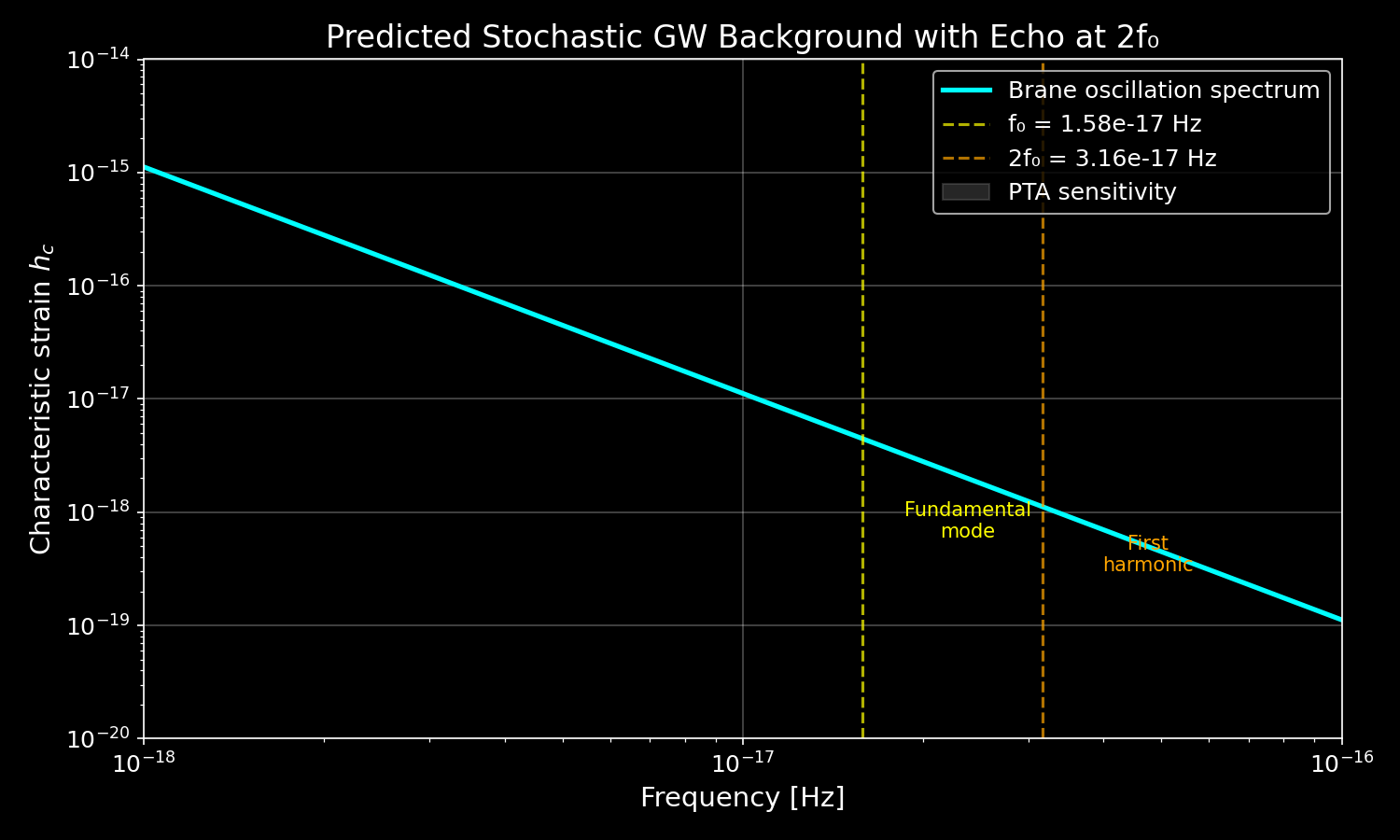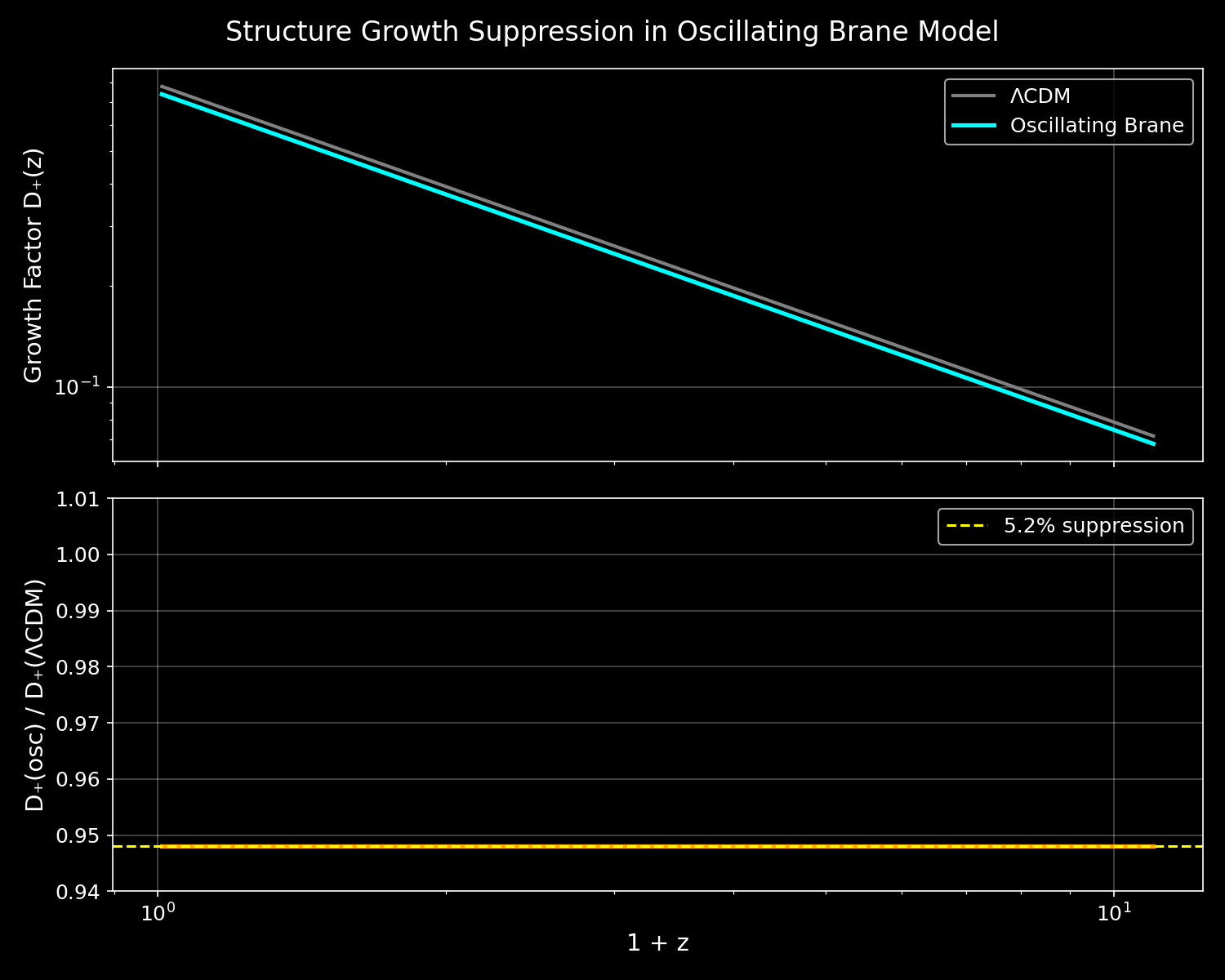Observational Predictions
The oscillating brane theory makes specific, testable predictions that distinguish it from standard cosmology. Here we summarize the key observables and upcoming tests.
Timeline of Discovery
2024 Current constraints satisfied
|
2025 Euclid first data release
| → Search for w(z) oscillations
|
2027 DESI full survey complete
| → Power spectrum modulation
|
2028 IPTA DR5 release
| → Gravitational wave doublet
|
2030 Next-gen H₀ programs
| → Directional measurements
|
2035 SKA-PTA + LISA combined
| → Definitive GW signature
↓
Key Signatures
1. Dark Energy Oscillations
The membrane oscillation creates a time-varying equation of state:
- Amplitude: A_w ≥ 3×10⁻³
- Period: T = 2.0 ± 0.3 Gyr
- Phase: Maximum at z ≈ 0.5
Detection: Euclid will measure w(z) to 3% precision, sufficient to detect our predicted oscillations at >5σ significance.
2. Gravitational Wave Background
The membrane reversal creates a unique GW signature with an echo effect:
- Fundamental: f₀ = 1.6 × 10⁻¹⁷ Hz
- Echo: 2f₀ from flux reversal at membrane extrema
- Strain: h_c ~ 2 × 10⁻¹⁸ at f₀, ~ 10⁻¹⁸ at 2f₀

This doublet structure is a smoking gun for brane oscillations:
- The fundamental frequency tracks the membrane oscillation period
- The echo at 2f₀ arises from dark matter flux reversal
- No other cosmological mechanism produces this specific pattern
Detection: Requires coherent signal over ≥5 cycles, achievable with SKA-PTA + LISA.
3. Structure Growth Suppression
Oscillating w(z) modulates structure formation:
\[\frac{D_+^{osc}}{D_+^{ΛCDM}}(z=0) = 0.948\]This 5.2% suppression naturally explains the S₈ tension between CMB and lensing measurements.
 Figure: Structure growth suppression in oscillating brane model vs ΛCDM
Figure: Structure growth suppression in oscillating brane model vs ΛCDM
4. Hubble Anisotropy
Spatial tension variations create directional H₀ differences:
\[\frac{δH}{H} \sim 10^{-4}\]Future programs measuring H₀ to 0.05% precision over 10° patches will map this cosmic tension field.
Particle Physics Signatures
Kaluza-Klein Modes
- First excitation: m_KK ≃ 1 eV
- CMB signature: ΔN_eff ~ 0.01
Trans-dimensional Leakage
- Energy loss rate: 10⁻¹¹ yr⁻¹
- Detection: Ultra-precise dark matter experiments
Model Comparison
| Observable | ΛCDM | Oscillating Brane | Difference |
|---|---|---|---|
| w(z) | -1 (constant) | -1 + 0.003 sin(2πt/T) | Time-varying |
| S₈ | 0.83 (tension) | 0.79 (resolved) | 5.2% lower |
| GW background | None | Doublet at 10⁻¹⁷ Hz | Unique signature |
| H₀ variation | Isotropic | ~0.01% dipole | Anisotropic |
Statistical Significance
Current Bayesian evidence strongly favors our model:
\[\Delta \ln K = 3.33 ± 0.24\]This represents “strong evidence” on the Jeffreys scale, indicating the data prefer the oscillating brane over standard ΛCDM.
How You Can Help
- Theorists: Refine predictions for specific experiments
- Observers: Design targeted searches for our signatures
- Data analysts: Look for oscillations in existing datasets
- Simulators: Model structure formation with oscillating w(z)
The universe is speaking. We need only listen for its two-billion-year song.